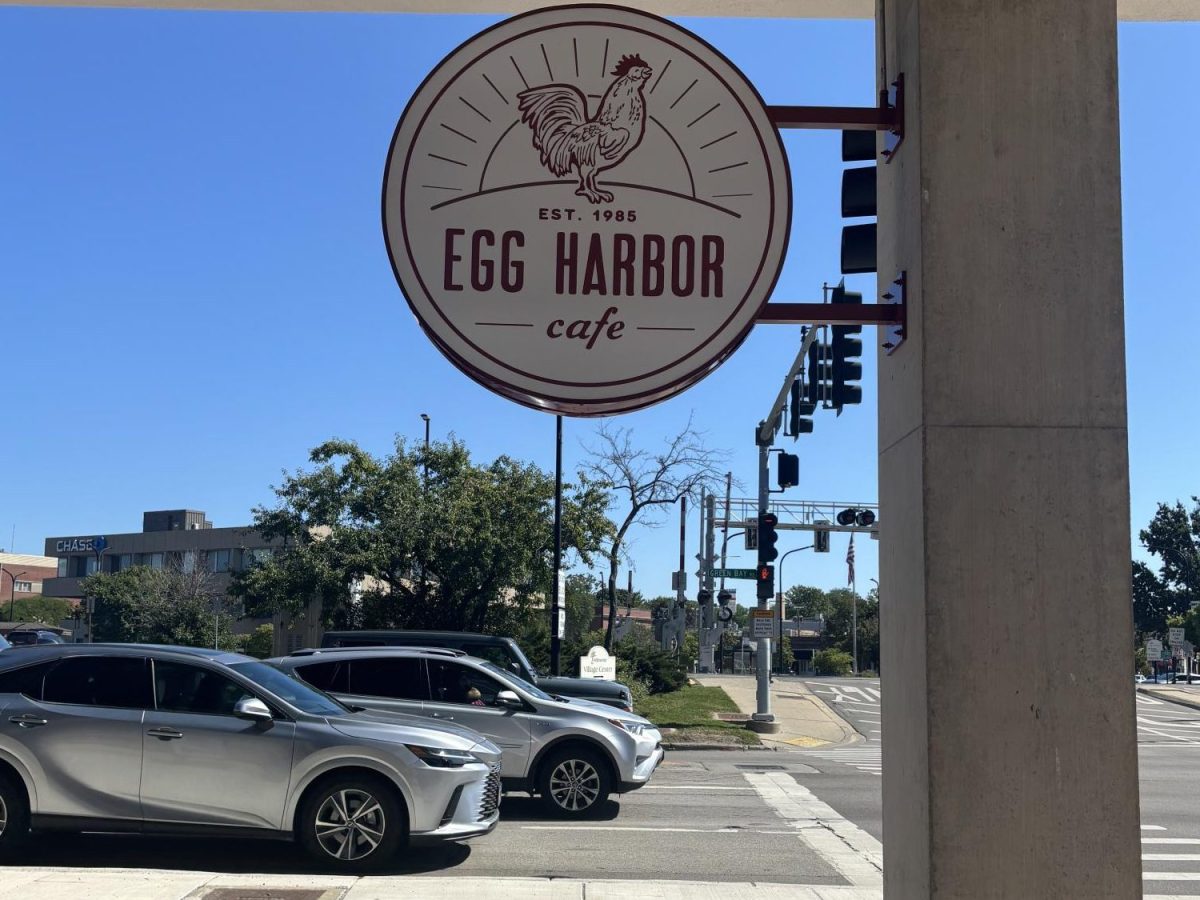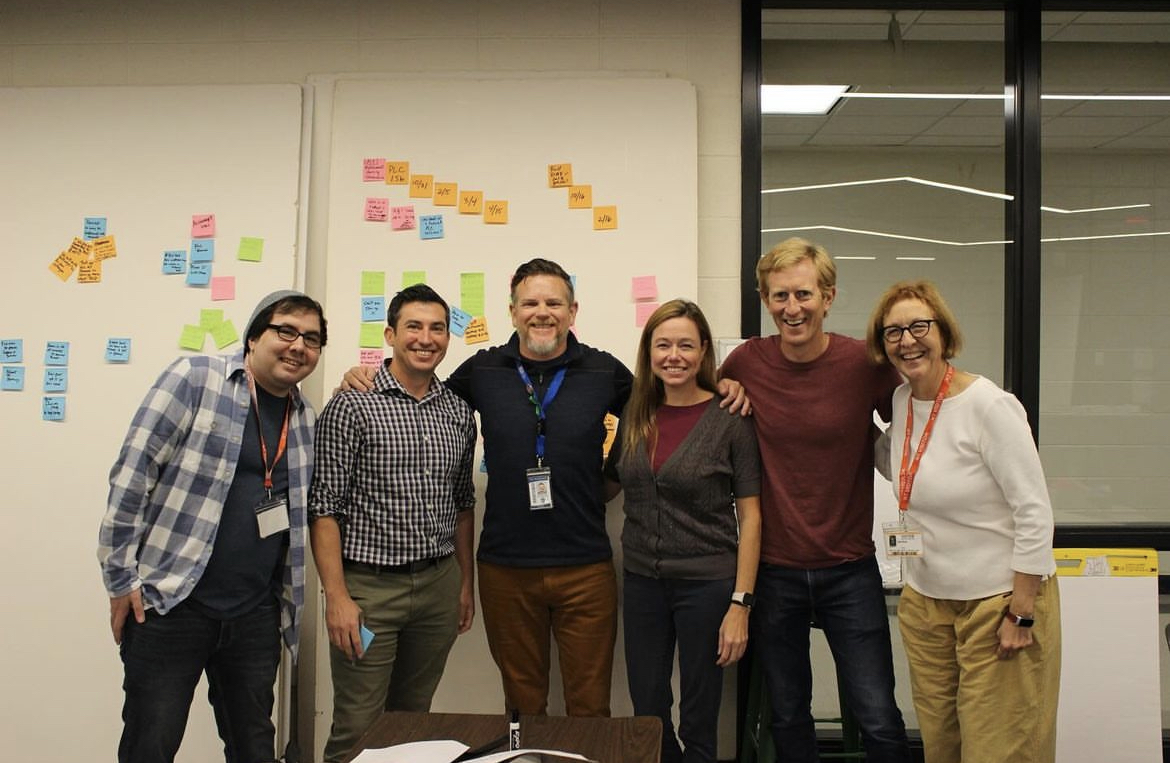In partnership with the Siebel Center for Design at the University of Illinois and the New Trier Educational Foundation, New Trier High School educators are in the process of integrating a human-centered design (HCD) program into the curriculum across all departments.
Described on New Trier’s Instagram as “a problem-solving approach in which participants identify the unmet needs of a population to design solutions collaboratively and across disciplines – all with the end user in mind,” this initiative makes New Trier one of the first high schools in the nation to adopt the unique program.
“It’s using this methodology of how can you solve for a problem that doesn’t have a set solution and how can you bring value to a problem that’s been identified, and humans are always the center of that,” art teacher Mark Bowers said.
The origination of this program began almost five years ago when several community members expressed a desire for a school within a school, similar to Integrated Global Studies School (IGSS), but instead featuring elements of business, entrepreneurship, and engineering. However, unlike IGSS, this program will be integrated into all subjects and will not be a standalone school.
Bowers, along with Julie Barr, Jason Boumstein, and Chris Van Den Berg, have been directly involved with this program as New Trier teachers, actively learning the principles and working alongside the administration and teachers to apply them across all subjects.
“We’re doing a PLC, which is a professional learning collaborative and we have many teachers from each department,” Bowers said. “We’re trying to get these ideas out to them so they can kind of start thinking about how that can be utilized within their current curriculum, so that is happening currently this year.”
As New Trier incorporates HCD principles into classrooms, the Siebel Center for Design is assisting teachers in understanding the nuances of the program, fostering an open mind for collaboration, and emphasizing the need to put ideas out there rather than becoming fixated on prolonged planning phases. The center is also conducting research on how professional development is approached at New Trier and collecting data to see if there are benefits of the HCD-oriented units.
“It’s exciting because it [the program] is so new, and there isn’t any kind of true factors of what ‘successful’ means in this subject,” Bowers said.
Teachers are excited to see how this approach to learning is applicable across every subject.
“Watching people from different experiences and different expertises work together. It is energizing. There’s a kinetic spark in the air when it happens,” Van Den Berg, a social studies teacher, said.
Van Den Berg, who joined the program in fall of 2021, emphasizes that the core of the program is empathy, which aligns with his teaching styles as an individual who values building relationships in learning spaces. He was also ecstatic to help develop this program as someone eager to keep learning in an ever-evolving world.
“I’ve always been someone who looks for something to continue to grow,” Van Den Berg said. “Education changes, students change, technology changes, ideas change, and there’s so many great ideas out in the world, and so that opportunity to learn and grow even if I’m later in my career was really exciting.”
Van Den Berg said he applied HCD principles in a unit for civics class that focused on increasing voter turnout among 18-to-29-year-olds. The diverse prototypes created by student groups showcased the power of different perspectives and experiences in problem-solving.
He especially valued how this unit provided an opportunity for quieter, creative students who often go unnoticed to flourish with their creativity and actively engage with their classmates.
“Ultimately, the thing that excites me most is how students respond to it. That there’s a smile on their face when they’re learning, that there’s an energy when they’re learning, that it allows someone like this student that I had who’s quiet and super creative, to have a voice where they might not have had a voice before,” Van Den Berg said.
By having a creative environment without the constraints of right or wrong, students found themselves more at ease to express their thoughts openly in the classroom.
“It was a really good and collaborative experiment that led us to use our outside resources and classmates to find solutions,” Sophie Meyer, a graduate of New Trier and former student of Van Den Berg’s civics class, said regarding the HCD unit. “It gave more skills than just reading data and doing average assignments on them, and gave us maximum opportunities to make the best prototype we could.”
Similar to Van Den Berg’s application of these principles, Barr, a math teacher, applied HCD strategies in her AP Computer Science class to analyze student attendance. She successfully devised customized solutions and opportunities to enhance student attendance, aligning with her experience using big data and numbers.
As this program looks toward expansion across all departments, it aims to prepare students for the future. Teachers think that human-centered design, being a multidisciplinary subject with connections to various fields, holds the potential to equip students with valuable skills.
“The more people that you are able to bring into the conversation and the more people you are able to bring into the problem solving which is what it [HCD] is at its core as well as its a way to solve problems, the better it is,” Van Den Berg said.









































